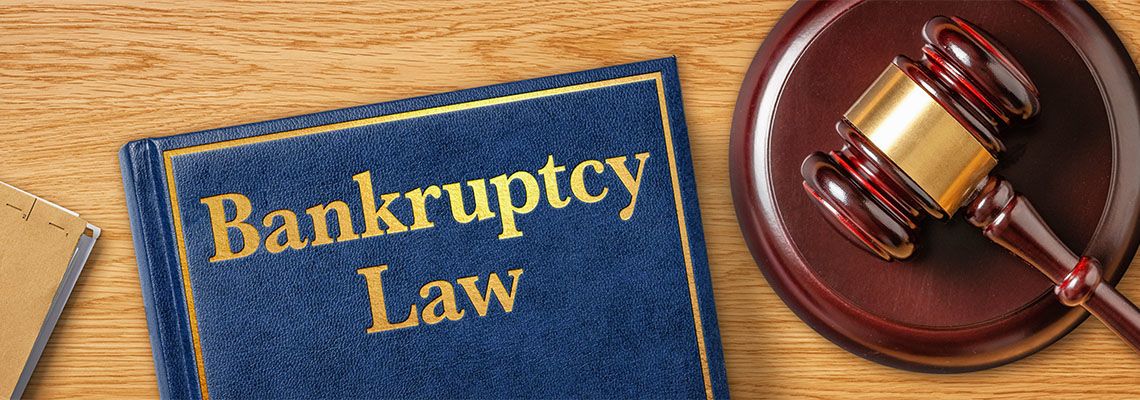
What Debts Are Eliminated in Bankruptcy?
There exists an over-generalization that bankruptcy gives the filer a clean bill of financial health with a zero balance for debts. There are reasons there are uniquely-numbered bankruptcy chapters, including 7, 11, and 13. Qualifications for each chapter, the types of debt each addresses, and whether all, some, or none of the debt is discharged varies.
For these reasons, it’s important for individuals and businesses to understand what debt will and will not be addressed in bankruptcy, as well as whether it will be eliminated, reduced, or merely restructured. It can be confusing to know which one will serve your financial needs best, and that is where we come in.
At The Orantes Law Firm, we help clients in Los Angeles County and Orange County, California, determine whether bankruptcy is right for them. If it is, then we make sure our clients have the information they need to properly choose which chapter they should file for. If you are preparing for bankruptcy, make sure it will provide the financial relief you need.
How Does Bankruptcy Relieve Debt?
Chapters 7, 13, and 11 of bankruptcy each relieve debt in different ways for different people. It’s important that you understand the distinctions.
Chapter 7 bankruptcy is only for individuals who meet income guidelines set by each state. As of April 1, 2023, the maximum income an individual in California can make to qualify for Chapter 7 is $75,235. There is a “means test” for Chapter 7 to ensure the bankruptcy tool is not abused. That’s because Chapter 7 eliminates all dischargeable debt, including secured and unsecured debt, medical debt, and more. You will owe nothing to creditors addressed in the bankruptcy filing, although you will lose the subject assets of secured debt, such as your home if your mortgage debt is discharged.
Chapter 13 is designed for individuals who can’t pass the Chapter 7 means test, usually because they are earning a wage that provides them with disposable income. This “wage-earners bankruptcy” reduces some debt owed and reorganizes the rest. The goal is to repay the remaining debt in full over a three- to five-year period. You send your disposable income monthly to the bankruptcy trustee who uses it to pay your creditors as agreed. Debts are discharged when you complete the repayment plan, and you retain your assets in the process, such as your home or car.
Chapter 11 can be used by individuals and businesses but is most often used by the latter. It is the most complex and expensive bankruptcy chapter of the three. Chapter 11 reorganizes debt obligations while a business, for example, continues to operate. In most cases, you repay the full amount of the debt owed by using savings from other cost-cutting measures. For example, a business may sell some assets and reduce its workforce and apply those savings to the debt.
What’s the Difference Between Secured and Unsecured Debt?
Secured debt includes those debts which have a lien against them until the debt is paid. This includes a mortgage or car loan. Therefore, if you default on paying your mortgage, the lender can assume ownership of the real property attached to that mortgage.
Unsecured debt has nothing the creditor can take back to satisfy what you owe. Credit cards, medical debt, personal loans, and student loans are examples of unsecured debt. If you default on unsecured debt, the creditor will file a case against you in court to obtain a judgment against you for not only the debt, but for interest, attorney’s fees, and court costs as well. You may be forced to sell assets or have your wages garnished to satisfy the judgment.
The battle between secure vs. unsecured debt is significant. In Chapter 7, for example, your assets will be liquidated, and the proceeds divided among your creditors. That is the cost of that “clean slate.”
What Does Bankruptcy Do?
Can bankruptcy stop creditor harassment? In fact, this is one of the major benefits of bankruptcy.
Upon filing for bankruptcy, the court will issue a stay order against all creditors named in the bankruptcy. Once the stay order is issued, creditor efforts to recover the debt from you, including phone calls, correspondence, and filing a lawsuit against you, are prohibited. However, it is paramount that you and your bankruptcy attorney include all relevant creditors in the initial filing. A creditor not included is free to continue efforts to settle the debt.
Bankruptcy can also help you avoid eviction from your home and repossession of your property. For example, your mortgage lender cannot sell your home on the courthouse steps once you have filed for bankruptcy and included that debt in the filing. This protection is not part of a Chapter 7 bankruptcy due to the “clean slate” basis for it. However, it will provide you with some breathing room in Chapters 11 and 13.
What Does Bankruptcy Not Do?
Bankruptcy is not the solution to all your financial woes. You cannot discharge such debts as student loan debt or money owed for child support and alimony. Although you may be able to reduce the amount you owe for back taxes, you won’t be able to erase that debt entirely, even in Chapter 7.
Get Answers & Legal Support
Different chapters of bankruptcy serve different goals. Your choice of chapter matters. So does your choice when hiring a bankruptcy attorney.
At The Orantes Law Firm, we understand that deciding to file for bankruptcy is difficult. We know bankruptcy law inside and out. We use that knowledge when we talk to our clients about their situation and their goals so we can guide them toward the best decision for them.
If you are considering bankruptcy, call our offices in Los Angeles or Woodland Hills, California, today. Let us help you explore your options and get you on a path toward financial relief.